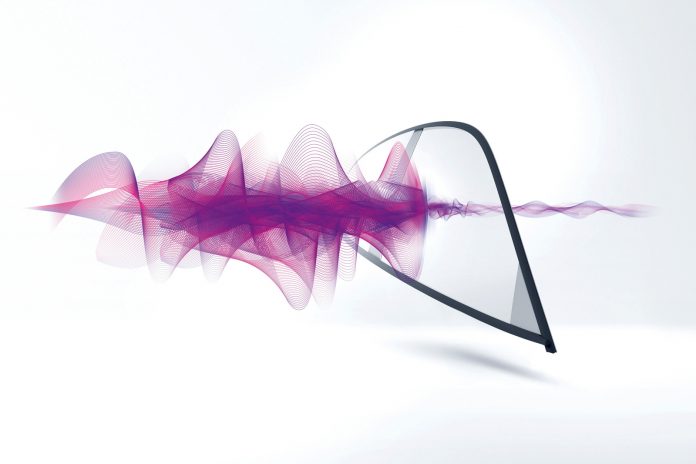While glass is one of the most common things in a car, it plays a much bigger role than just allowing us to see where we’re going.
Soundproofing is one example, and acoustic glass is something premium that manufacturers have been using for years. Its potential is even more attractive for EVs, as airborne noise is far more noticeable as powertrain noise all but disappears.
The technology behind acoustic glass is particularly elegant because, like so many clever ideas, it piggybacks on technology originally developed for a completely different purpose.
Historically, windshield glass was made safe for use in automobiles by subjecting it to a high temperature process to produce “toughened” or “toughened” glass. The heat treatment puts an end to shards of glass that injure occupants if it ruptures, but the car’s interior is showered with small chunks of glass, much of which would remain hidden under carpets and in cracks for the rest of the car’s life.
A better alternative, mandatory in motorsport before passenger cars, is laminated glass, which consists of a thin layer of polymer sandwiched and bonded between two thinner sheets of glass. Manufacturers have fitted laminated windows to road cars since 1983, although tempered glass is still used in the side and rear windows of some cars.
Acoustic glass is a fancy form of laminated glass, but it’s still based on the same principle of laminating two panes of glass on either side of a single thin sheet of polymer. Noise is controlled in a number of ways, either by reflecting it back to the source or by absorbing the sound energy within the polymer and glass package. By using it in a car, the side windows and windshield are equipped with it, which offers the all-round plus in safety and security of laminated glass.
Porsche recently gave a technical insight into its own use of noise protection glass. Its glass consists of five layers: three layers of polyvinyl butyral (PVB) sandwiched between two layers of glass. The PVB has acoustic properties to absorb vibrations in the surrounding glass, significantly reducing sound transmission into the cabin.
Acoustic materials and devices are often designed to target specific frequencies (from high to low tones). The Porsche acoustic glass reduces external noise by 7.3% in a frequency range from 630 Hz at the lower end of the scale to 6.3 kHz at the upper end. Emergency vehicle sirens have a pitch between 360 Hz and 630 Hz, so acoustic glass does not mask their warnings. Porsche’s glass is actually lighter than traditional laminated glass due to the greater thickness of the PVB content, saving around 2kg on the Panamera.
The security advantages are also worthwhile, because the thicker PVB layer makes it more burglar-resistant than conventional glass. It can also be tinted to make acoustic privacy glass.

